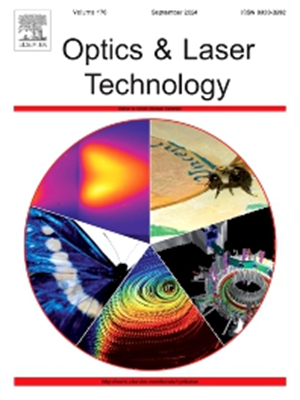数字微镜调制光的小波传播模型
IF 5
2区 物理与天体物理
Q1 OPTICS
引用次数: 0
摘要
数字微镜设备(dmd)支持快速光调制。在定量相位成像、结构照明显微镜和光学神经网络中,实际调制与理论期望之间的偏差是不可忽略的。然而,现有的模型依赖于简单的近似和不可调节的采样和计算,导致对实际光场传播的跟踪不准确,阻碍了DMD的应用。在这里,我们提出了一种基于小波的传播模型(WPM),该模型将复杂的调制过程分解为一系列小波衍射。我们通过调制旋涡光束和随机散斑等复杂场来验证我们的模型。与传统方法相比,WPM的计算误差减小了一半。WPM显著提高了光调制的计算精度,尤其是光相位的计算精度。此外,我们通过光学衍射神经网络展示了WPM的潜力,结果表明光调制的精确计算有助于优化网络的训练。本文章由计算机程序翻译,如有差异,请以英文原文为准。
Wavelet-based propagation model for the light modulated by a digital micromirror device
Digital micromirror devices (DMDs) support fast light modulation. The deviation between the actual modulation and the theoretical expectation is not negligible for quantitative phase imaging, structured illumination microscopy, and optical neural network. However, the existing models rely on simple approximation and non-adjustable sampling and calculation, which results in inaccuracy in tracking the actual optical field propagation and a hindrance to the applications of DMD. Here, we propose a Wavelet-based Propagation Model (WPM) that decomposes the complex modulation process into a series of wavelet diffractions. We validate our model through modulating complex fields such as vortex beams and random speckles. The calculated error of WPM was reduced to half compared with the conventional method. WPM significantly improved the calculation accuracy of light modulation, especially for the light phase. Furthermore, we demonstrated the potential of WPM through an optical diffraction neural network, and the result showed that the exact calculation of light modulation could help optimize the training of the network.
求助全文
通过发布文献求助,成功后即可免费获取论文全文。
去求助
来源期刊
CiteScore
8.50
自引率
10.00%
发文量
1060
审稿时长
3.4 months
期刊介绍:
Optics & Laser Technology aims to provide a vehicle for the publication of a broad range of high quality research and review papers in those fields of scientific and engineering research appertaining to the development and application of the technology of optics and lasers. Papers describing original work in these areas are submitted to rigorous refereeing prior to acceptance for publication.
The scope of Optics & Laser Technology encompasses, but is not restricted to, the following areas:
•development in all types of lasers
•developments in optoelectronic devices and photonics
•developments in new photonics and optical concepts
•developments in conventional optics, optical instruments and components
•techniques of optical metrology, including interferometry and optical fibre sensors
•LIDAR and other non-contact optical measurement techniques, including optical methods in heat and fluid flow
•applications of lasers to materials processing, optical NDT display (including holography) and optical communication
•research and development in the field of laser safety including studies of hazards resulting from the applications of lasers (laser safety, hazards of laser fume)
•developments in optical computing and optical information processing
•developments in new optical materials
•developments in new optical characterization methods and techniques
•developments in quantum optics
•developments in light assisted micro and nanofabrication methods and techniques
•developments in nanophotonics and biophotonics
•developments in imaging processing and systems

 求助内容:
求助内容: 应助结果提醒方式:
应助结果提醒方式:


